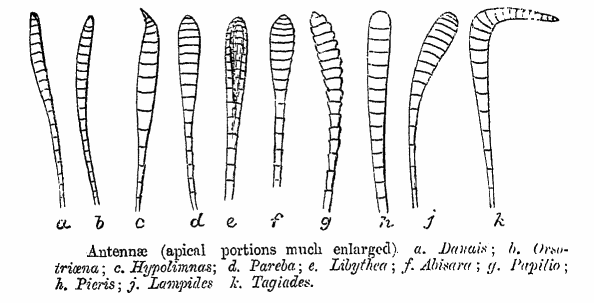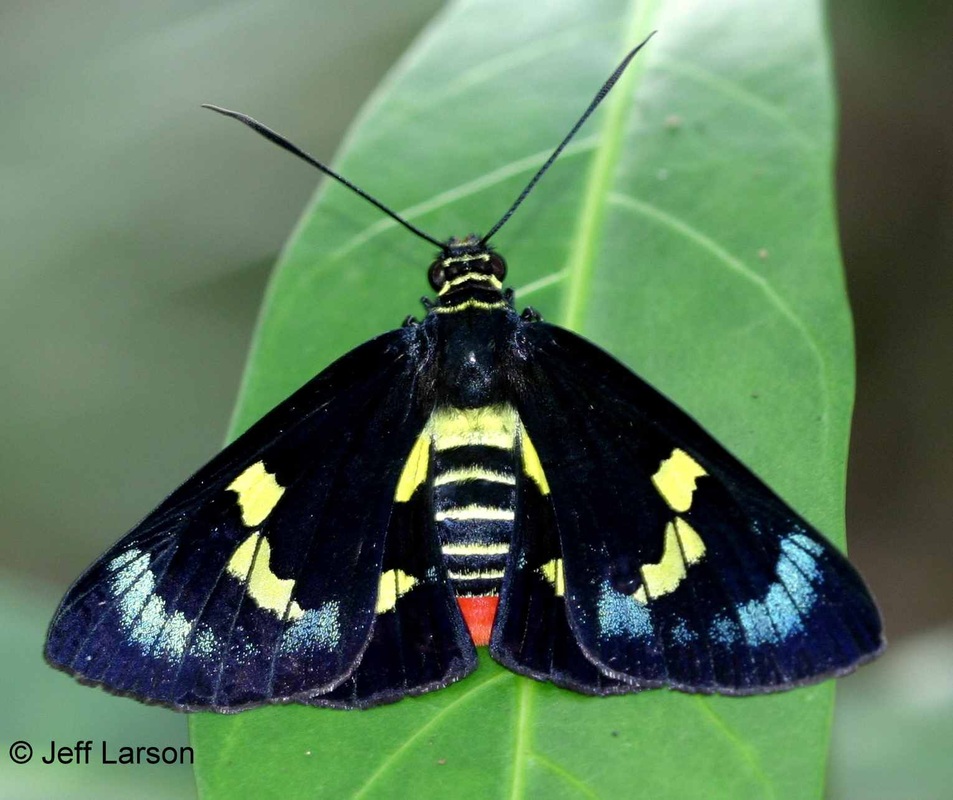Darwinsbulldog wrote:hackenslash wrote:Indeedy. Most illuminating is his exposé on the influence of Linnaeus' laddishness in the detail of taxonomic nomenclature...
I still don't believe him on the moffs vs butters thingie.



I have the
evidence, old chap.

Just for the fun of it, 'll run once more through the reasons why the distinction is purely artificial, has no real scientific validity, and indeed runs into several anatomical and taxonomic issues. Let's take the proposed distinctions one by one, and see that [1] they are frequently replete with exceptions, and [2] result in paradox and contradiction in some instances.
We will start with:
Distinction 1: Butterflies fly by day, moths fly by night.
Already, the UK fauna alone has a large collection of exceptions to this rule, in the form of day flying moths. Examples include the Blood-Vein,
Timandra comae, the Shaded Broad-bar,
Scotopteryx chenopodiata, the Latticed Heath,
Chiasmia clathrata, the Cinnabar Moth,
Tyria jacobaeae, and most of the Burnet Moths (Family Zygaenidae). The rest of the world doubtless has its own exceptions to contribute here, to the rendering of this distinction as null and void. Plus, one of the insects regarded as a "butterfly", the Brazilian
Dynastor napoleon, is a night flying species.
Distinction 2: Butterflies are brightly coloured, moths are dull brown.
A "distinction" that doesn't really exist. Many moths in the UK fauna alone are brightly coloured, and I've recently posted some photos of species that fall into this category in the wildlife thread, such as the Brimstone Moth,
Opisthograptis luteolata, which is bright yellow, along with the Swallowtailed Moth,
Ourapteryx sambicaria. Then there are no less than
six bright green Geometrids in the UK fauna, known colloquially as "Emeralds", and then there's the Scarce Silver-Lines, Bena bicolorana[/i], which looks as if it's been fashioned out of slivers of jade. We can also throw into the mix at this point the Cinnabar Moth,
Tyria jacobaeae, and several of the Burnets, which have bright aposematic colours. Conversely, the Family Hesperiidae, which contains the Skippers, all of which are referred to as butterflies, is
littered with dull brown species, many requiring genital dissection to identify them to species level. The Hesperiidae will appear time and again as an oddity within the Lepidoptera, notably not only being placed in their own Family, but their own separate Superfamily to boot. However, this Family does contain a good number of colourful tropical species - the Genus
Pyrrhopyge from the Amazon contains numerous examples, alongside the iridescent blue
Phareas coeleste - view this beauty
here.
Distinction 3: Butterflies rest with their wings folded vertically, moths rest with their wings flat and horizontal.
Again, even the UK fauna has exceptions. The Hesperiidae is again an exception - a clade of butterflies whose members rest with wings in various odd orientations, the wing edges frequently forming an X shape when seen head on. Even supposedly non-exceptional butterflies, such as the Peacock and the Speckled Wood here in the UK, will frequently rest with their wings open. Likewise, in the Geometridae, a Family usually regarded here in the UK as moths, the various Thorn species will rest with their wings folded vertically, as will several other Geometrids such as the Latticed Heath,
Chiasmia clathrata. Indeed, in the wildlife thread, I've recently posted some nice photos of the Canary-Shouldered Thorn,
Ennomos alniaria, resting with wings vertically folded.
Distinction 4: Butterflies have clubbed antennae, moths have a range of distinct antennal morphologies.
Again, the Hesperiidae (those Skippers again!) are an exception, with antennae that are thickened, but end in a point, and which resemble most closely from a morphological standpoint, the antennae of the Burnet Moths (Family Zygaenidae), which superficially resemble butterfly antennae from a distance, until subjected to closer examination. The Burnet Moths also fall into two other exceptional categories, being brightly coloured with aposematic colouration (they're protected from predation by cyanogenic glycosides sequestered from larval foodplants), and day-flying. In this case, the distinction actually resulted in the erection of high-level taxa, the Rhopalocera (club horns) and the Heterocera (other horns), but these taxa are not considered to form an essential part of the modern classification scheme, because whilst the Rhopalocera is a monophyletic assemblage, the Heterocera (excluding the Rhopalocera) is by definition paraphyletic.
Even within those taxa collectively referred to as "butterflies", there is some variation in antennal morphology
even when the Hesperiidae are ignored. This graphic is illustrative thereof (though a Hesperiid is included therein):

The Genera in question listed above belong to the following clades (all
bona fide butterflies):
a)
Danaus (Family Nymphalidae, Subfamily Danainae)
b)
Orsotriaena (Family Nymphalidae, Subfamily Satyrinae)
c)
Hypolimnas (Family Nymphalidae, Subfamily Nymphalinae)
d)
Pareba (Now considered a junior synonym of
Acraea) (Family Nymphalidae, Subfamily Heliconinae)
e)
Libythea (Family Nymphalidae, Subfamily Libytheinae)
f)
Abisara (Family Riodinidae)
g)
Papilio (Family Papilionidae)
h)
Pieris (Family Pieridae)
j)
Lampides (Family Lycaenidae)
k)
Tagiades (Family Hesperiidae, Subfamily Pyrginae)
Distinction 5: Moths possess a frenulum, butterflies do not.
This distinction begins with a problem, in the form that only certain well-defined clades of moth possess a frenulum. For those unfamiliar with this, a
frenulum is a wing-coupling structure, consisting of a thin rod-shaped projection from the thorax, coincident with the root of the hindwing, which engages with a small hook on the forewing. This is only present in some moth Families (e.g., Zygaenidae): some of the more primitive moths use a different structure called a
jugum, a lobe on the forewing that meshes with the hindwing. However, no butterfly had ever been found with such a structure. At this point, some of you are anticipating me pointing to those Skippers again, and you'd be right

Say hello to the Regent Skipper,
Euschemon rafflesia, a Skipper from Australia:

This species is unusual, in that it possesess a frenulum. It's the only butterfly to possess one. But, in one of those twists that biology has a habit of unleashing upon the unwary, the species is sexually dimorphic - only the male possesses a frenulum.
Just to throw some more spanners in the attempt to make the distinction tidy, there is an entire Family of Lepidoptera, the Hedylidae, which were originally treated as somewhat aberrant Geometrids, until more closely examined, and found to warrant their own Family (and for that matter, their own Superfamily, the Hedyloidea). These too possess a frenulum, but are otherwise suggestive of being a sister taxon to the Papilionoidea, the Superfamily containing most of the butterflies, though they conmprise an interesting collection of insects, with some puzzling anatomical features.
And with that, I'll take a break for some oat crunch biscuits.










